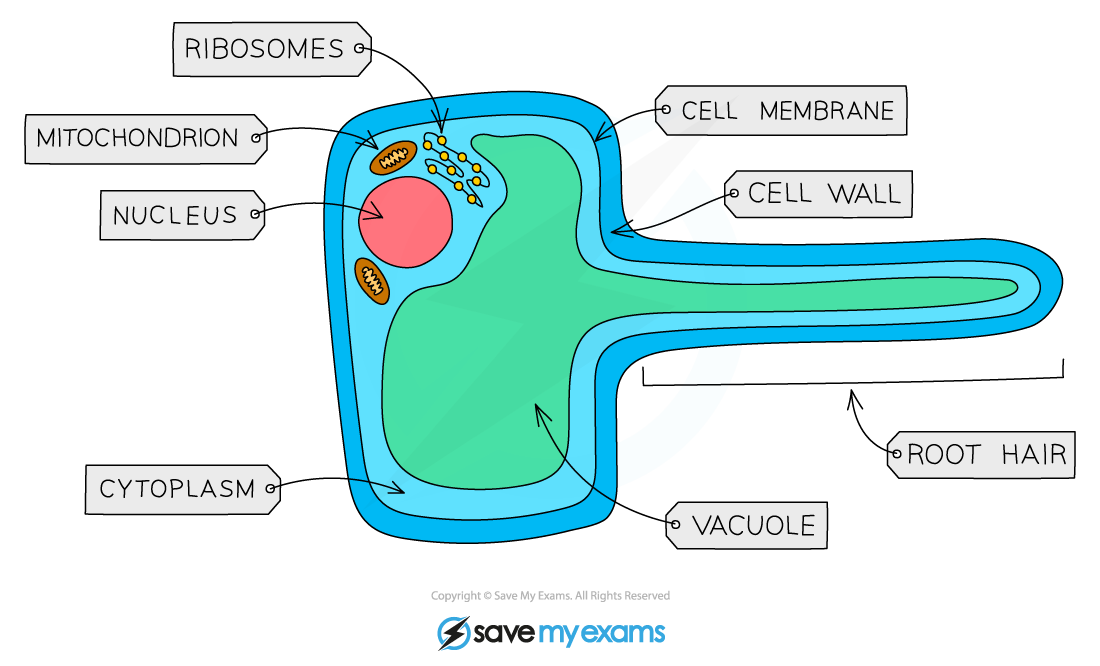Organisation of Cells (Cambridge (CIE) O Level Biology) : Revision Note
Specialised Cells
Specialised cells in animals
Specialised cells are those which have developed certain characteristics in order to perform specific functions
These differences are controlled by genes in the nucleus
Cells specialise by undergoing differentiation: this is a process by which cells develop the structure and characteristics needed to be able to carry out their functions
Specialised Cells in Animals Table
Cell | Function | Adaptation |
|---|---|---|
Ciliated cell | Movement of mucus in the trachea and bronchi of the chest cavity |
|
Nerve cell | Conduction of impules |
|
Red blood cell | Transport of oxygen |
|
Sperm cell | Reproduction |
|
Egg cell | Reproduction |
|
.
Diagrams of specialised cells in animals

Ciliated cell

Nerve cell

Red blood cells

Sperm cell

Egg cell
Specialised Cells in Plants Table
Cell | Function | Adaptation |
|---|---|---|
Root hair cell | Absorption of water and minerals from soil |
|
Xylem vessel | Conduction of water through the plant; provides support for the plant |
|
Palisade mesophyll cell | Photosynthesis |
|
Diagrams of specialised cells in plants

Root hair cell

Xylem structure

Palisade mesophyll cell
Levels of Organisation in an Organism
Level | Description |
|---|---|
Cells | Basic functional and structural units in a living organism |
Tissues | GRoups of cells of similar structure working together to perform the same function |
Organs | Made from different tissues working together to perform a specific function |
Organ systems | Groups of organs with related functions working together to perform body functions |
Levels of organisation diagram

An example of the different levels of organisation
Levels of Organisation Examples Table
Organ system | Organ | Tissue |
|---|---|---|
Shoot system | Leaf, stem, flower, fruit |
|
Root system | Root, tuber |
|
Digestive system | Oesophagus, stomach, small and large intestines |
|
Circulatory system | Heart, arteries, veins |
|
Immune system | Thymus, spleen |
|
Respiratory system | Trachea, bronchi, lungs |
|
Excretory system | Liver, kidney, skin, lungs |
|
Nervous system | Brain , spinal cord |
|
Reproductive system | Ovary, uterus, vagina, penis, testes |
|
Examiner Tips and Tricks
Most incorrect answers here come from not being able to identify a tissue, so it’s worth making sure you understand and remember that tissues are always made up of only one type of cell.

You've read 0 of your 5 free revision notes this week
Sign up now. It’s free!
Did this page help you?
